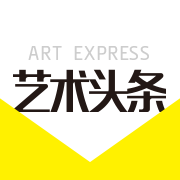
SHOWS THAT MATTER: Ukiyo-e Masterworks and Their Modern Heirs at Japan Society
2013-03-26 08:52:40 未知
WHAT: “Edo Pop: The Graphic Impact of Japanese Prints”’
WHEN: March 9 – June 9, 2013
WHERE: Japan Society, 333 East 47th Street, New York
WHY THIS SHOW MATTERS: Ukiyo-e woodblock prints, with their boldly colored, minimal perspective-shifting portrayals of 15th to 17th-century Japanese landscapes, historic events and cultural scenes, are some of the most recognizable visible art forms in the world. Born during the Edo period of 1603 to 1868, a time of major economic and cultural growth, this avant-garde printmaking style expanded and modernized the delicate considerations of line work, balanced composition, and flat imagery of traditional Japanese painting. Due to their inexpensive production (and for their depictions of raunchy social undercurrents), the prints also became popular as a mass-consumed art form.
Well-known masters such as Katsushika Hokusai, who created “Under the Wave Off Kanagawa” — of a giant tsunami swallowing a boat against the backdrop of a snowy Mt. Fuji — have been reproduced and widely shown internationally, becoming iconic symbols of Japanese culture and art history. The legacy of Hokusai and other ukiyo-e masters is the focus of Japan Society’s current exhibition “Edo Pop: The Graphic Impact of Japanese Prints,” highlighting the influence the classic art form has had on today’s contemporary artists, and featuring close to 100 historic prints from the Minneapolis Institute of the Arts’ “Pictures of the Floating World” collection shown alongside approximately 30 pieces by AIKO, Emily Allchurch, Paul Binnie, Masami Teraoka, and more.
The representation of social and political issues as well as sensual female imagery were central to popularity of early works; as in Kitagawa Utamaro’s 1794-95 “Kitchen Scene,” a simultaneously erotic and domestic scene from the inside of a geisha house. And since, both the dramatic scenes and awkward perspectives have been a source of inspiration to contemporary artists such as Masami Teraoka, whose geisha girls are tattooed fast-food consumers who are seldom coy or careless in expressing their promiscuity, as seen in “AIDS/Series/Geisha in Bath.”
But the softer, pastoral side of ukiyo-e (also integral to its legacy) is not ignored by Japan Society director Miwako Tezuko, who juxtaposes landscape masterworks by Utagawa Hiroshige next to Emily Allchurch’s lightbox transparency of flowers growing in a polluted pond on the outskirts of urban Tokyo. The themes are best seen in AIKO’s commissioned mural for the exhibition “Sunrise,” a multi-walled painting that throws geishas, Mt. Fuji, floral motifs, and graffiti all together into a massive homage to the still ever-popular art form.
(责任编辑:张天宇)
注:本站上发表的所有内容,均为原作者的观点,不代表雅昌艺术网的立场,也不代表雅昌艺术网的价值判断。

 翟莫梵:绘画少年的广阔天空
翟莫梵:绘画少年的广阔天空 “纤维”提问2022:存在何“缓”?
“纤维”提问2022:存在何“缓”? 周杰伦都要去的伦敦弗里兹,到底有多火爆?
周杰伦都要去的伦敦弗里兹,到底有多火爆? 徐冰:地球上不能解决的艺术问题,去外太空换个新角度
徐冰:地球上不能解决的艺术问题,去外太空换个新角度
全部评论 (0)